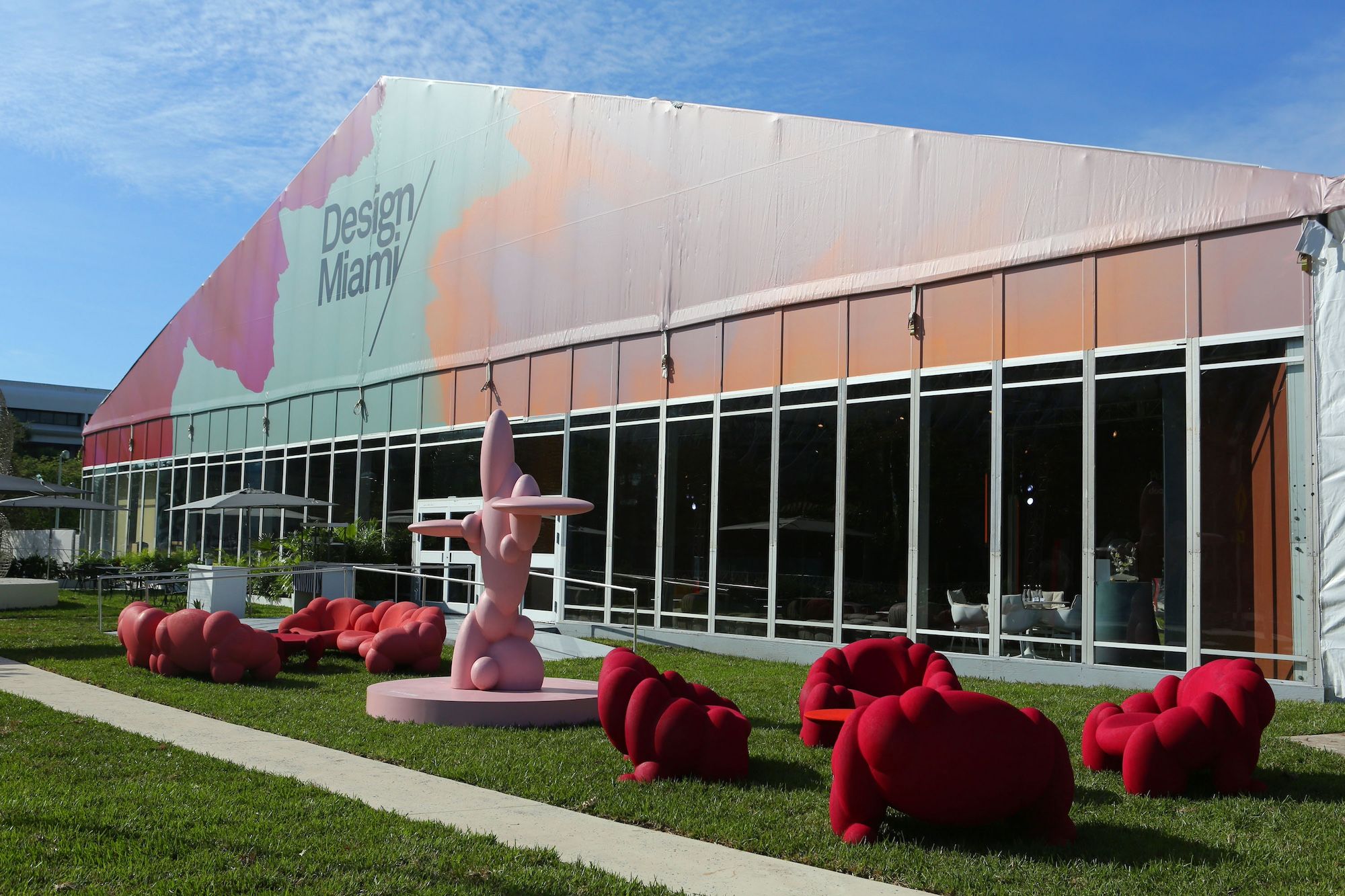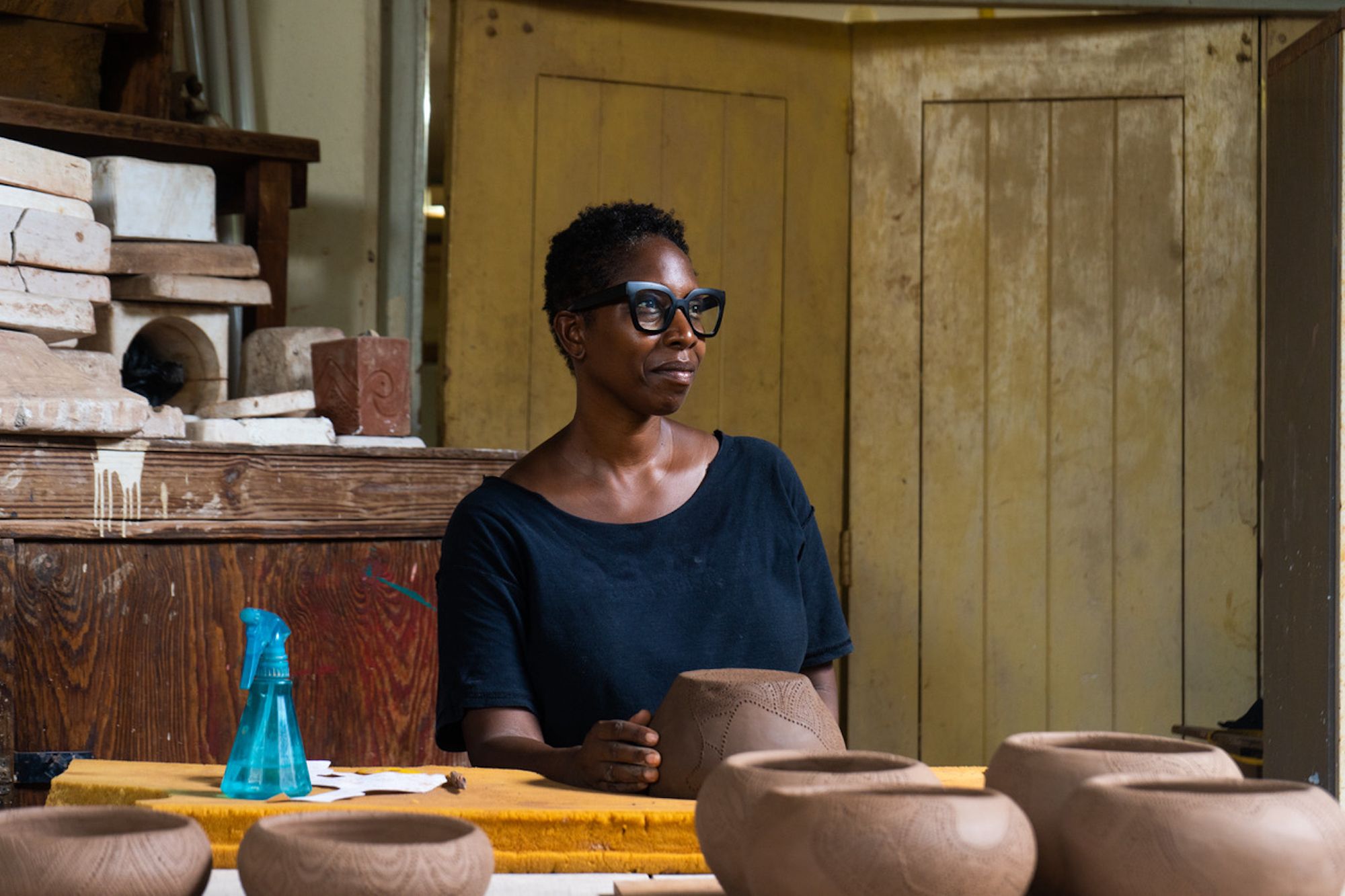SPOTLIGHT: WHERE WE STAND NOVEMBER 22 2023
by Wava Carpenter
The Beirut-based designer on bringing people together through the power of craft

NADA DEBS IN HER STUDIO-SHOWROOM IN BEIRUT
Photo © Yasmina Hilal
To augment the Design Miami/ 2023 curatorial theme Where We Stand, we’ve put together an editorial miniseries featuring interviews with exceptional creatives whose practices exemplify socially engaged, narrative-driven design approaches. These thought-provoking design thinkers all have works on view in the upcoming fair and, for this series, have responded to our queries with edifying insights into design’s role in strengthening our connections with one another.
Today, we're pleased to share our interview with Levantine designer Nada Debs. Represented by Galerie BSL, Debs is world renowned for her extraordinary collaborations with regional artisans, creating finely crafted furniture and objects that employ traditional processes to achieve multicultural expressions with 21st-century appeal. It’s an approach she calls “handmade and heartmade,” which draws on her own transcontinental experiences—from her upbringing in Japan and her training and early career in the US and UK, to the last two decades she's lived and worked in Lebanon, where her family is originally from.
For Debs, craft is an ideal vehicle for uplifting communities, preserving ancient knowledge, and bringing people together across borders, timelines, and identities. Scroll on for her reflections on some of the questions animating the Design Miami/ 2023 Where We Stand theme.
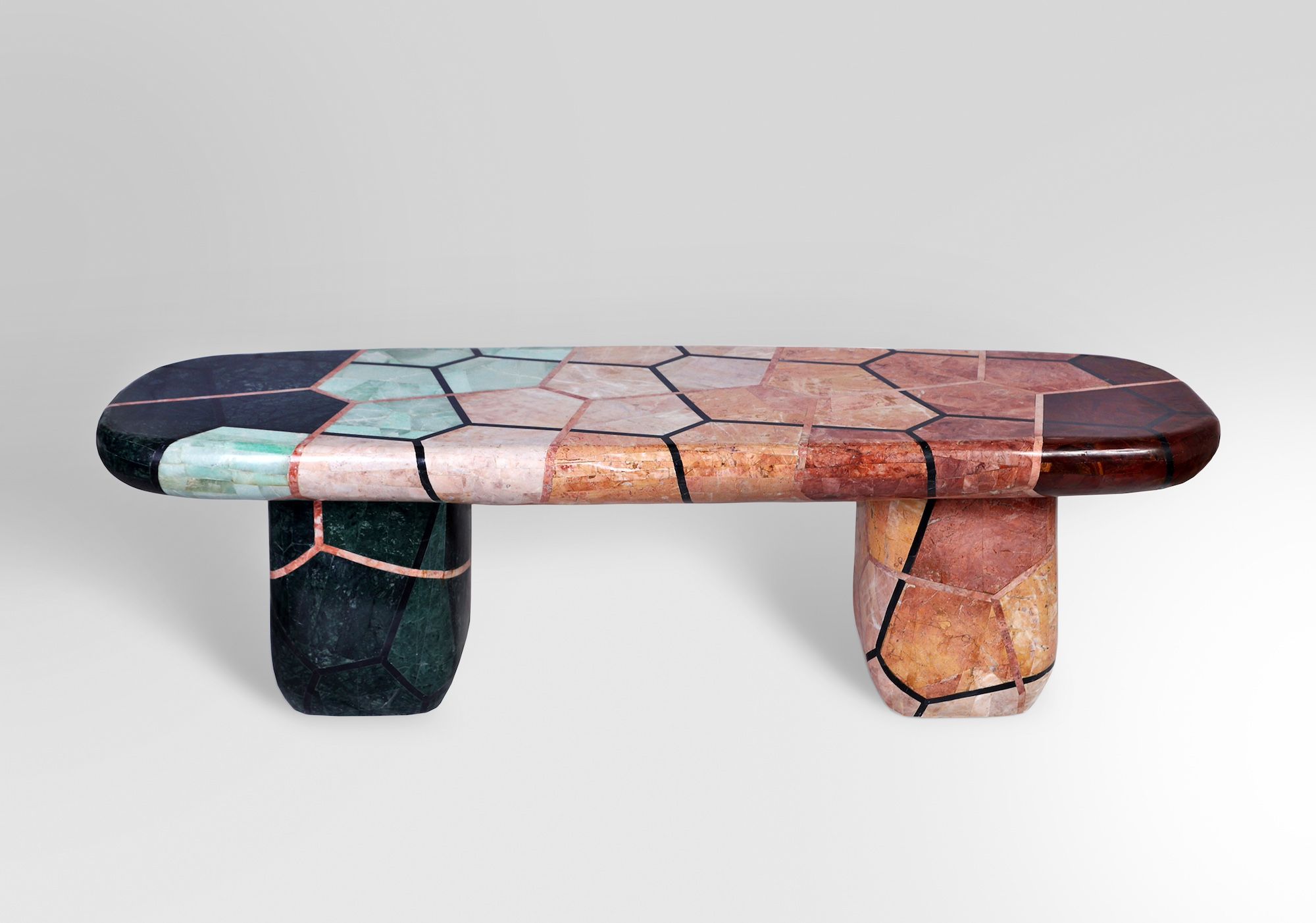
NADA DEBS X STUDIO LÉL/ GANDHARA CARAPACE BENCH FOR GALERIE BSL, FEATURING STONE INLAY HANDCRAFTED BY AFGHAN MASTER CRAFTSMEN REFUGEES IN PAKISTAN AND DEBUTING AT DESIGN MIAMI/ 2023
Photo © Galerie BSL
Wava Carpenter/What role does storytelling play in your practice?
Nada Debs/My practice is really about working with craft communities and pushing the boundaries of craft traditions in order to create links from one culture to another, from one brand to another, or from one identity to another. So the stories told by my work are about making connections, connecting cultures, and cultural exchange. It’s very much about creating emotion. I try to find the emotion in design by touching people’s sense of identity—touching something about who they really are.
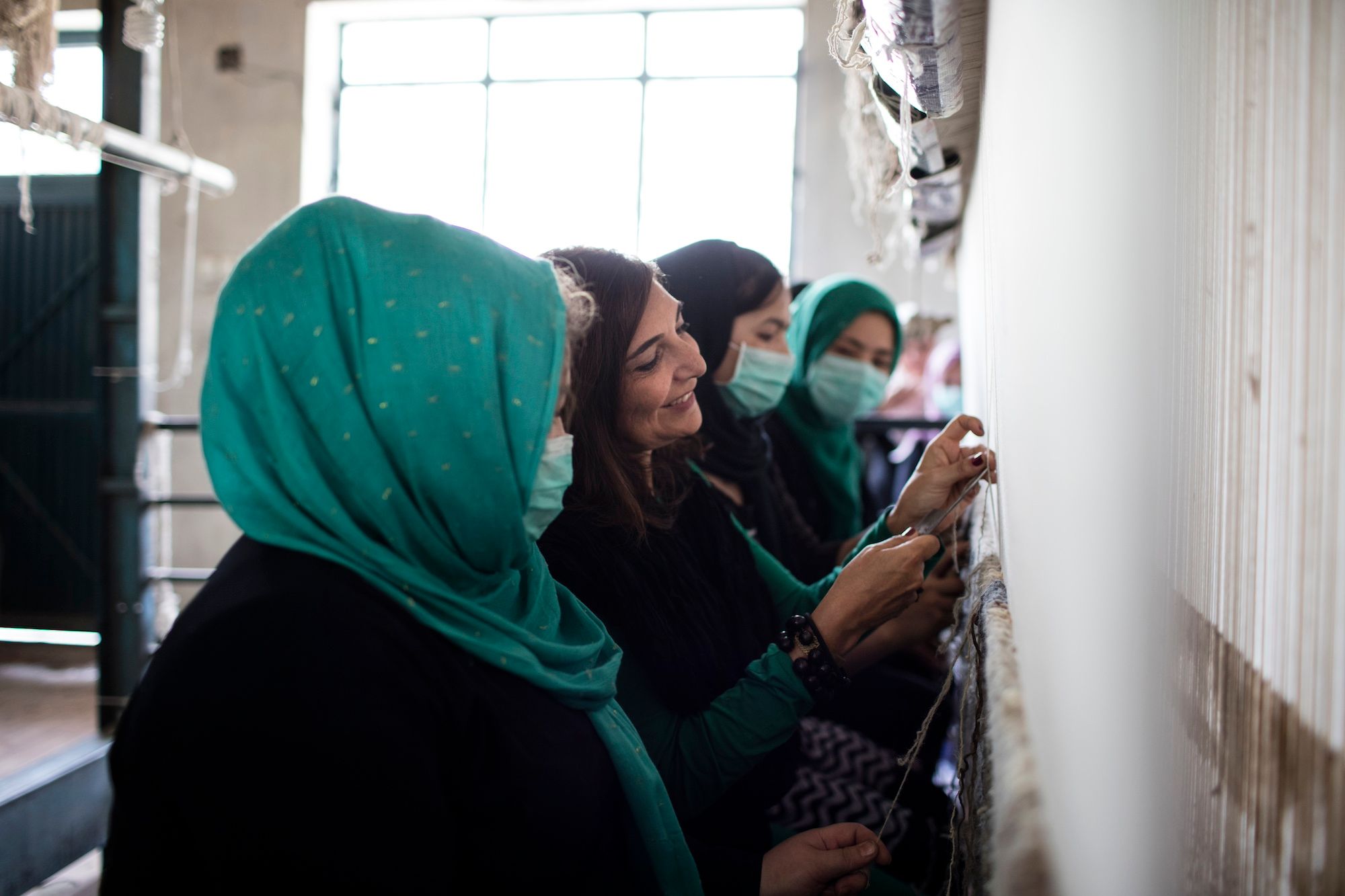

NADA DEB X FBMI/ YOU & I CARPET COLLECTION, HANDCRAFTED BY WOMEN WEAVERS IN AFGHANISTAN
Photos © Ieva Saudargaitė and Jalal Abuthina
WC/Which projects are you most proud of to date and why?
ND/I have three main projects that I’m really proud of—all which involve working with craft communities, especially marginalized craft communities. The first is the YOU & I carpet collection, woven by Afghan women carpet weavers. I had the opportunity to visit Afghanistan and sit with the women, and together we came up with a style of carpet that merges old and new. It felt empowering for all.
The second project is Gandhara Carapace, a collection of collectible design tables, stools, and consoles that feature mosaic surfaces in semiprecious and marble stones. A collaboration with Studio Lél, local artisans, and Afghan master craftsmen refugees in Pakistan, the project uses traditional stone inlay techniques and a palette inspired by all the beautiful colors of the region to realize a very contemporary look and feel. Pieces from the collection will be presented by Galerie BSL at Design Miami/ this year.
And third is the Stitched Horizons Pebble collection, a collaboration with Palestinian women embroiderers who live in refugee camps in Lebanon. As I often do when working with traditional artisans, I challenged these highly talented embroiderers to push their skills in new directions. They usually work only on fabrics, but for this project they stitched patterns onto the caned backs of chairs. I believe that pushing craft communities toward something new helps craft traditions survive for future generations.
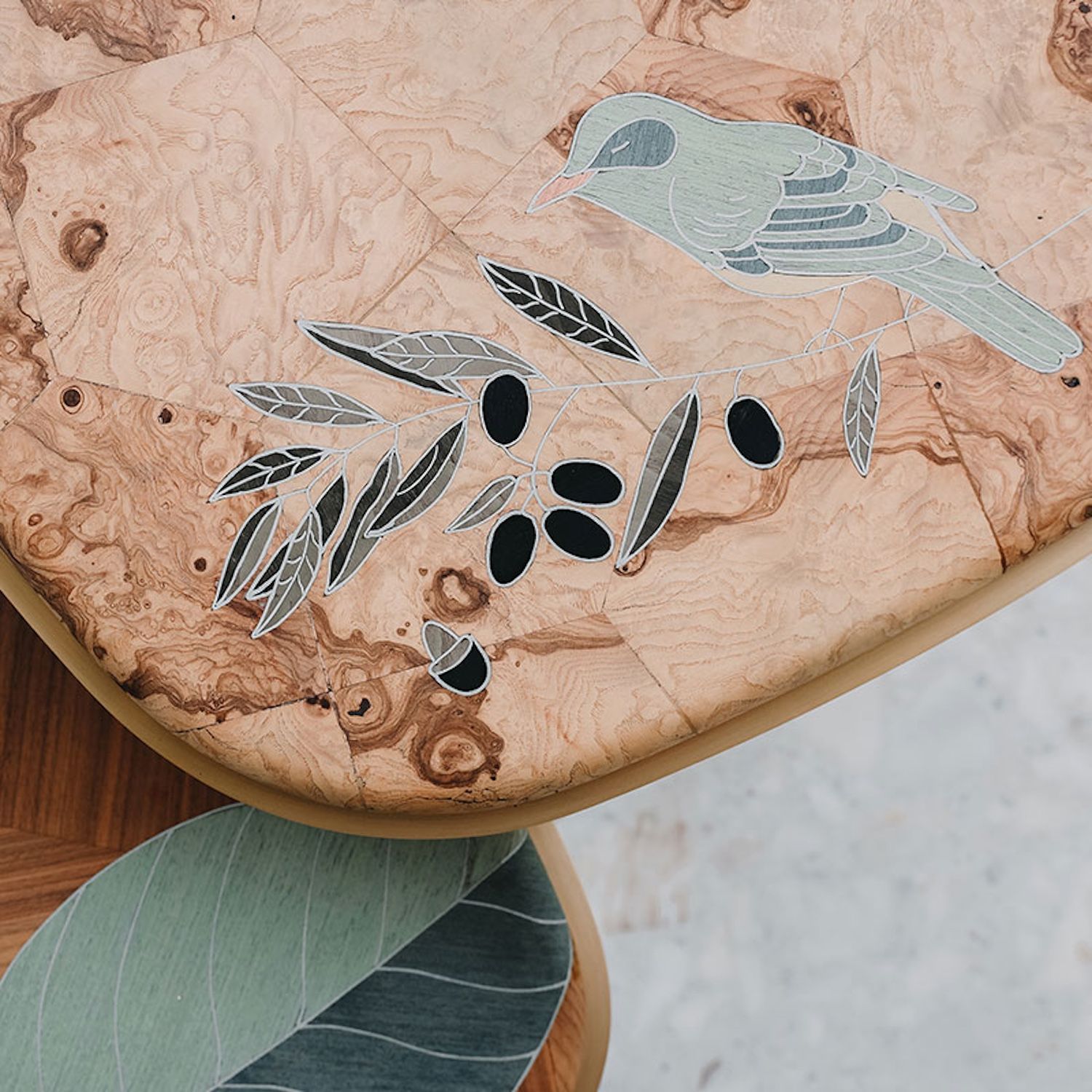
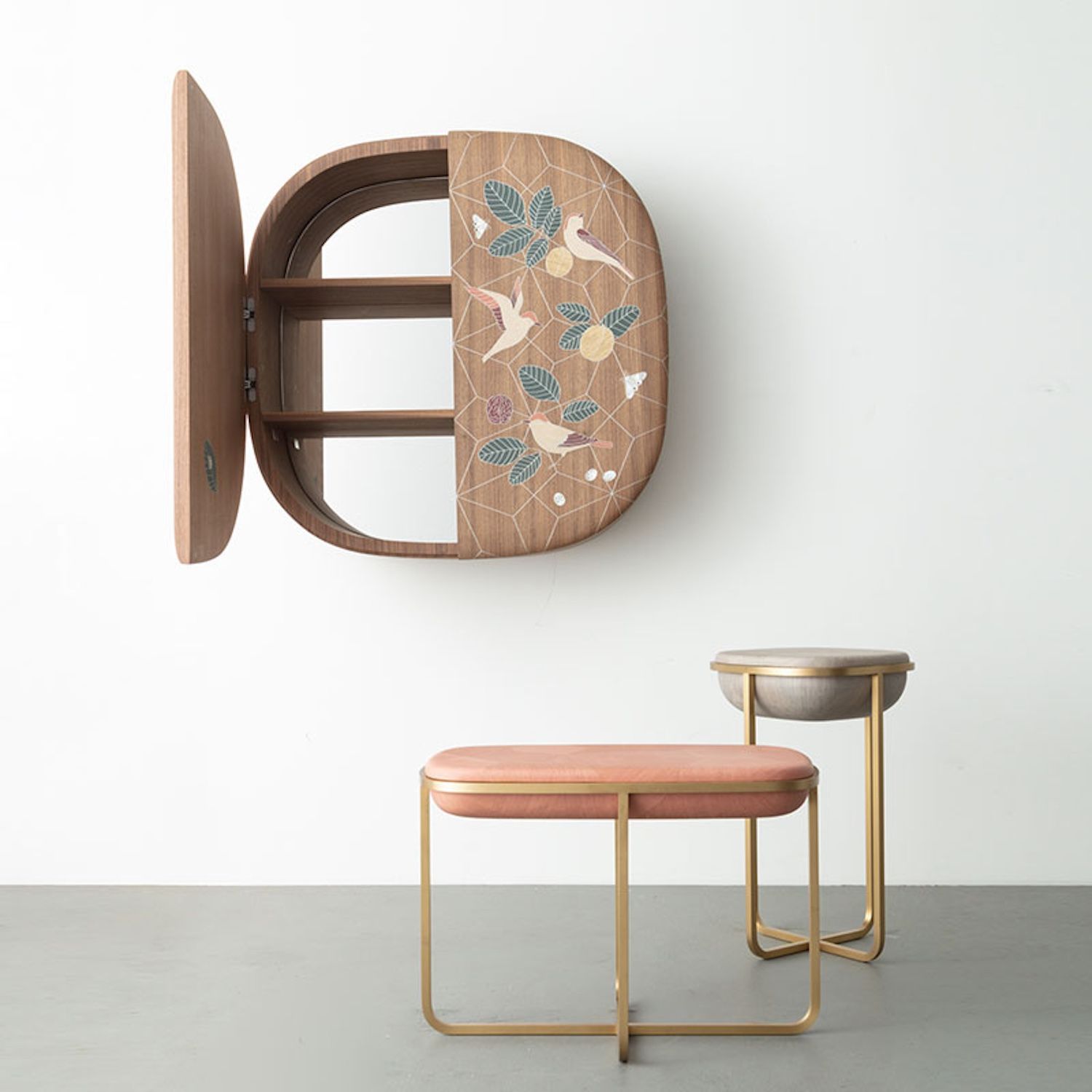
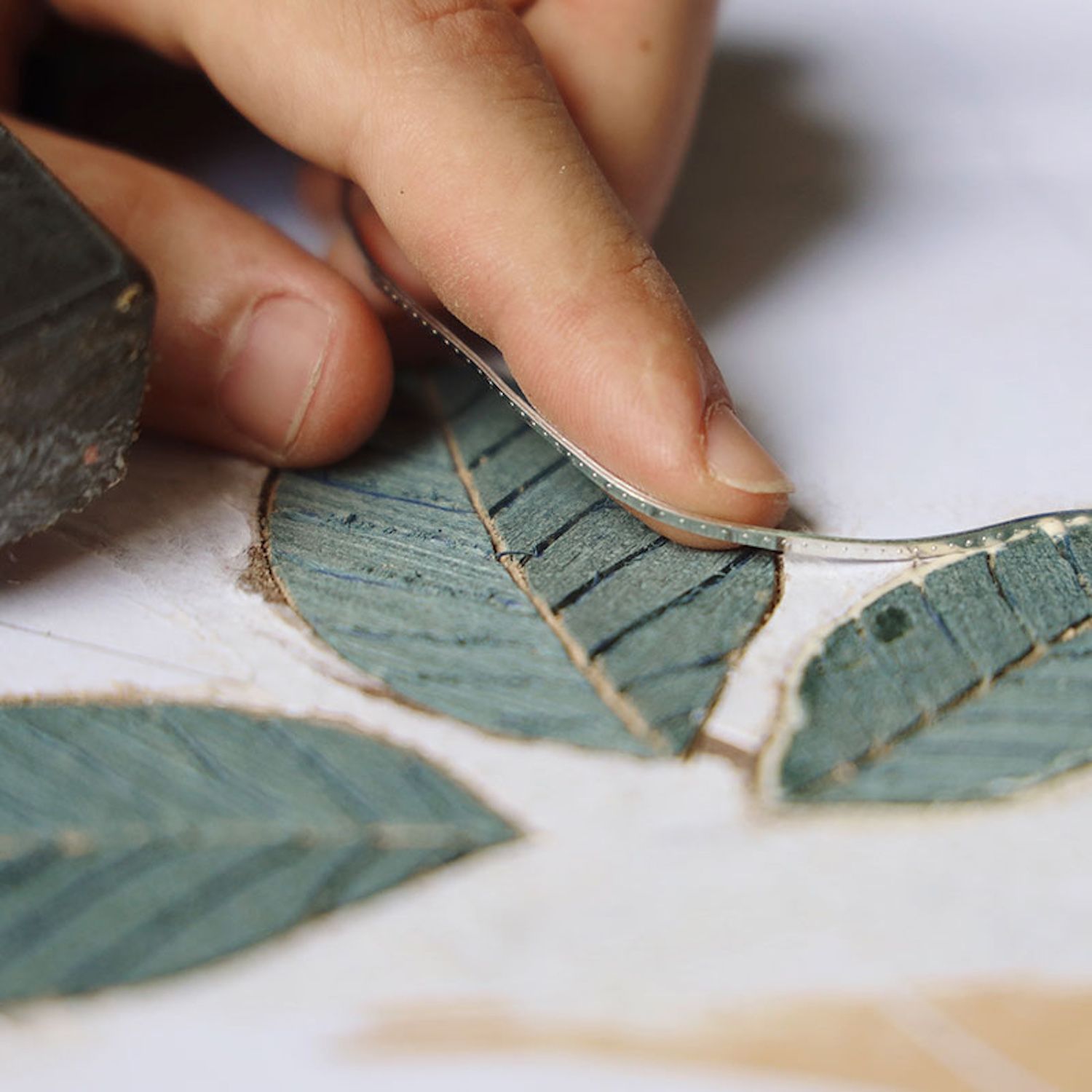
NADA DEBS X SALIM AZZAM/ PATTERNS IN NATURE COLLECTION, FEATURING WOOD MARQUETRY HANDCRAFTED IN LEBANON
Photos © Studio Nada Debs
WC/How can design be a tool for positive social change?
ND/For me, working with craft communities is a very positive approach, because it acknowledges and shows appreciation for people who are dedicated to keeping an expression of their culture and identity alive. These collaborations often give traditional craftspeople a boost of confidence, which is much needed and deserved in a world that too often overlooks the value of craft.
Many times I have seen the children of artisans get inspired to carry on their family’s traditions—members of a younger generation who had planned to study something else often change their minds when they recognize that what their parents are doing can not only bring income to the family but also give other people immense joy. I think it helps when someone comes along and gives traditional artisans a new challenge and new audience. It makes them feel like they're making a difference.

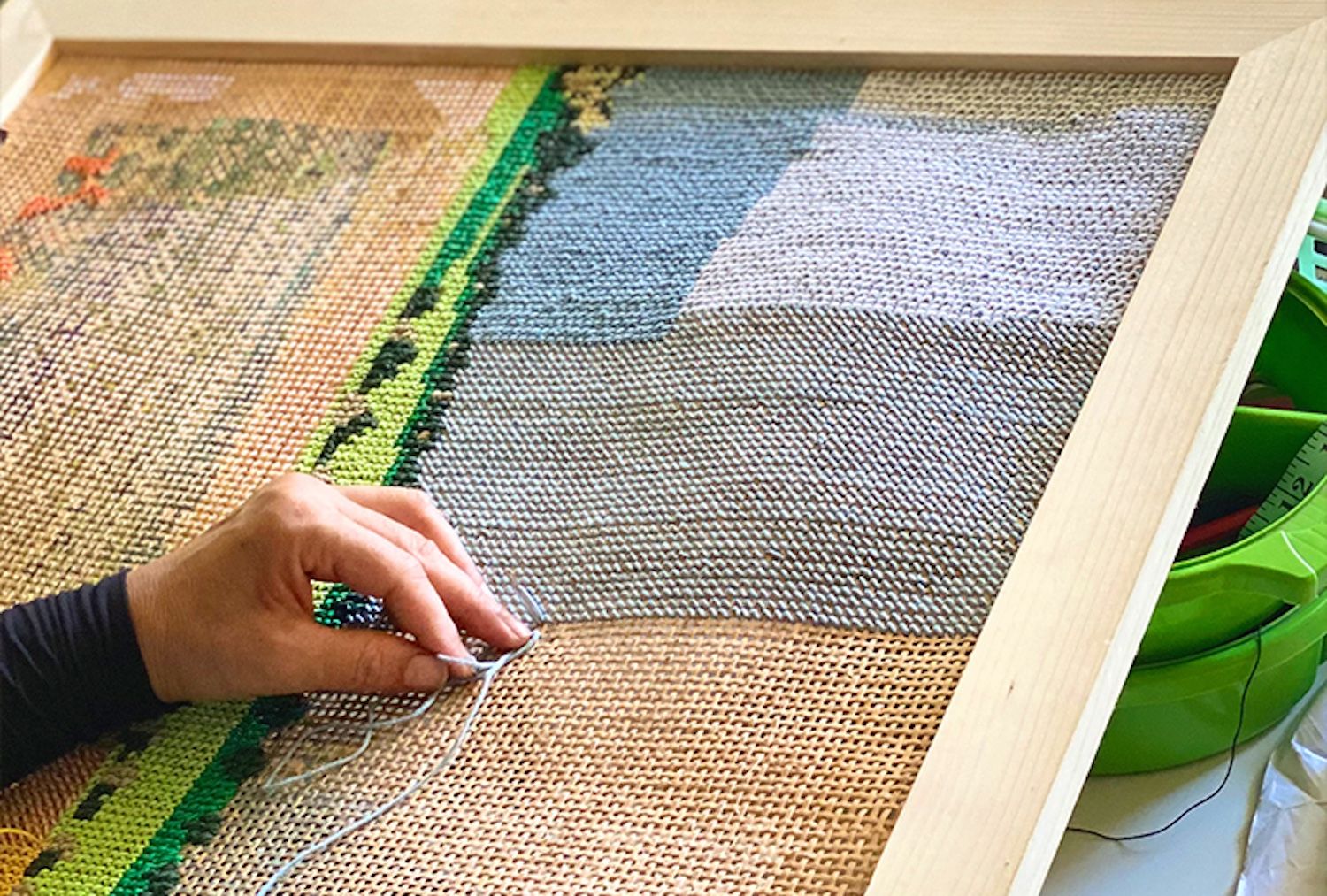
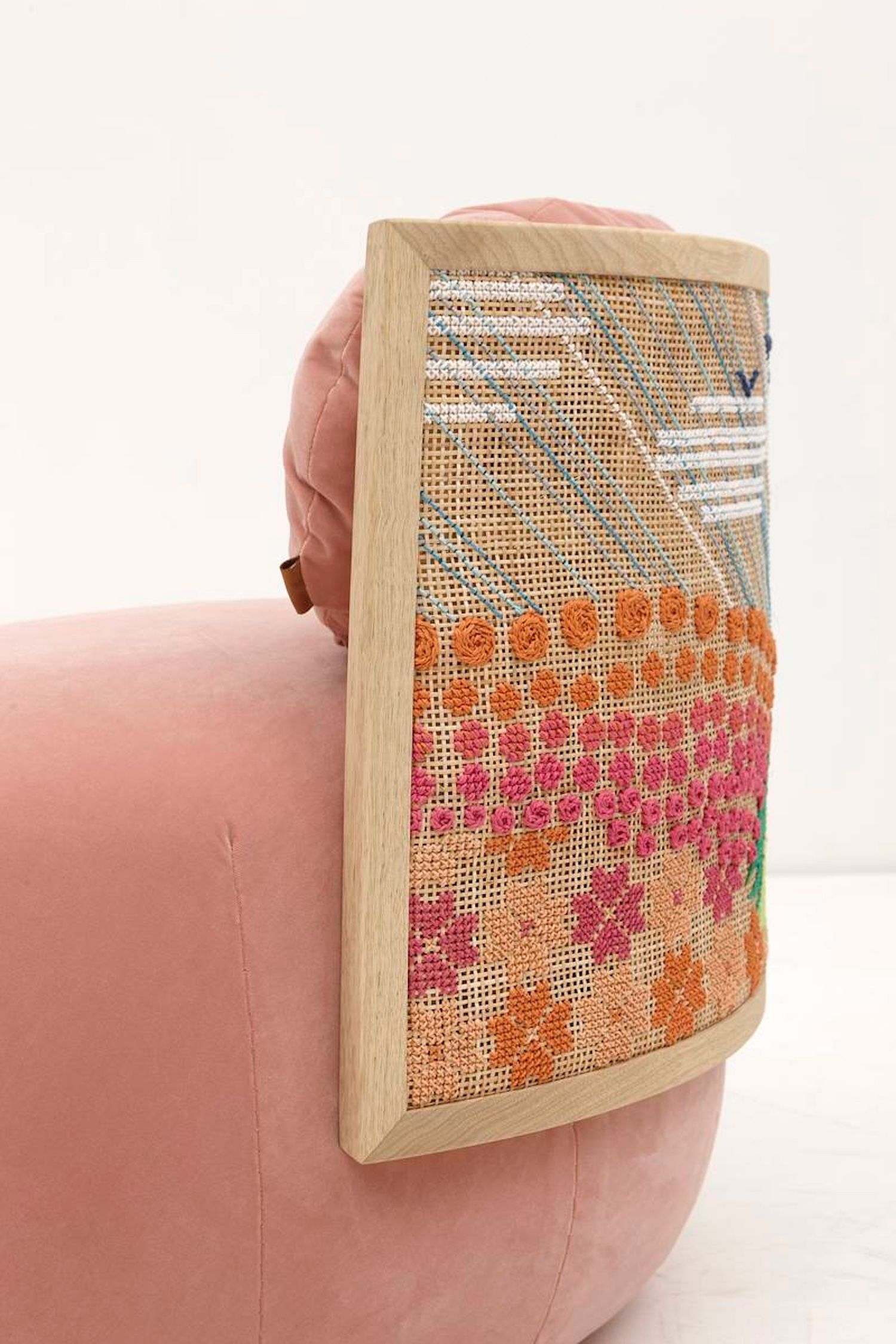
NADA DEBS/ STITCHED HORIZONS PEBBLE CHAIR COLLECTION, HANDCRAFTED BY PALESTINIAN WOMEN REFUGEES IN LEBANON
Photos © Galerie BSL and Studio Nada Debs
WC/How can looking to our roots—heritage, community, the land beneath our feet—inform our way forward?
ND/Because I grew up in Japan and found myself yearning for my Lebanese roots, I understand how important it is to have a sense of belonging—a sense of heritage, community, and being connected to the land and its history. For me, that’s where craft comes in. Craft is a kind of connection to an identity. And while this connection to a rooted identity is important, we also need to find more forward-facing ways of using all this ancient knowledge. Craft needs to constantly evolve to engage with and remain relevant in the moment. Today, that might mean developing craft techniques that integrate AI or other new technologies. It’s not always easy to know the best ways for craft to evolve with the times—I certainly don’t have all the answers. But incorporating and mixing cultures can always create something new. And it’s always an interesting path to explore.

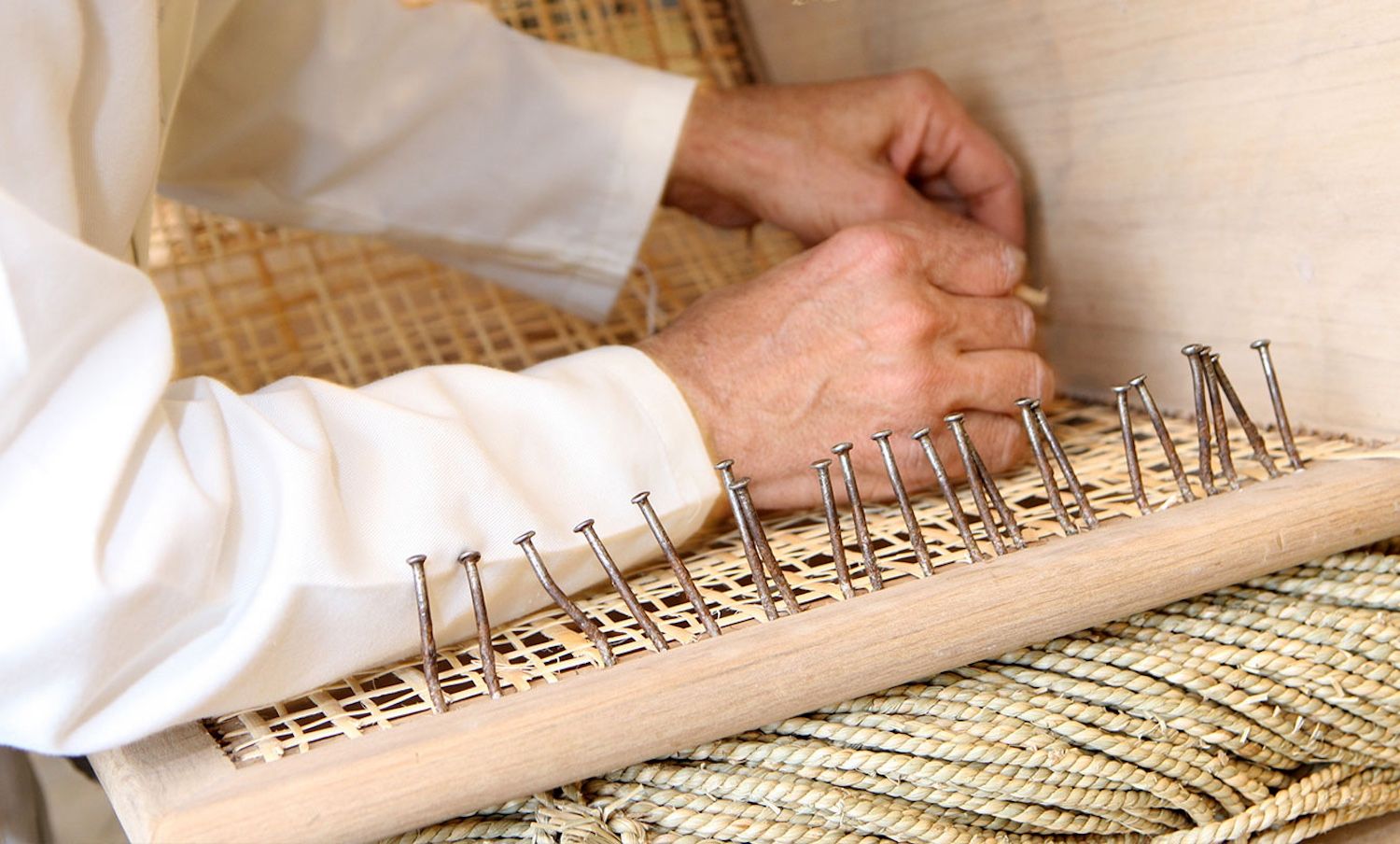
NADA DEBS/ SUMMERLAND COLLECTION, FEATURING STRAW WORK HANDCRAFTED IN LEBANON
Photos © Nada Debs Studio
WC/What kind of stories would you like to see told through design more often?
ND/I like to see more stories where we find commonalities–that find common ground between differences. For me, this is always the challenge and joy: exploring each collaborator’s identity to develop expressions that highlight our shared values. I believe in the theory of “and” instead of “or.” I think through design we can push cultures forward and bring people together.
Stay tuned for more Where We Stand interviews in the coming days.
This editorial series was conceived and curated by Anna Carnick and Wava Carpenter of Design Miami and Anava Projects as an exploration of the Design Miami/ 2023 curatorial theme Where We Stand.
About Where We Stand: Reflections on Place, Purpose & Community: Objects are anthropological markers of time and place. Through material, process, and form, every object tells a story—not only of the makers and societies responsible for their creation, but also of the human experience more broadly. Responding to the complexities that define our current timeline, Where We Stand explores the storytelling power of design and, in turn, its potential for nurturing connectivity. As we celebrate objects from around the globe inspired by place, identity, and heritage, we hope to prompt questions—and potential answers—to help us navigate this complex, polarized period in history: How do objects narrate human progress? And how can we harness the beauty and power of our most intimate, rooted bonds, individually and collectively, to realize a more perfect world to call our own?
Click here to purchase tickets to attend Design Miami/ 2023, open to the public December 6-10 at Convention Center Drive & 19th Street in Miami Beach.
